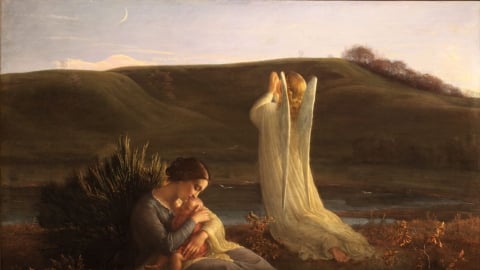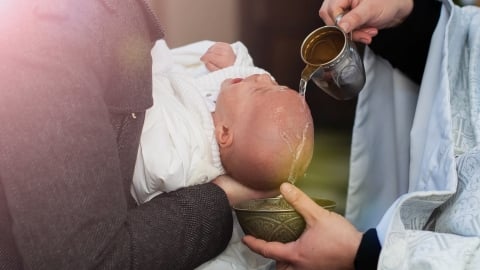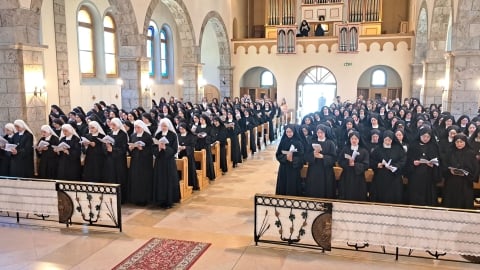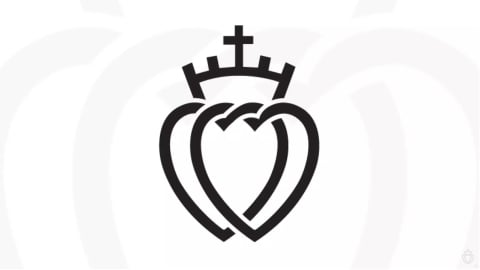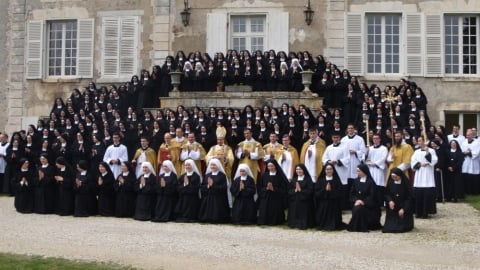The Legacy of St. Sabbas and Mar Saba
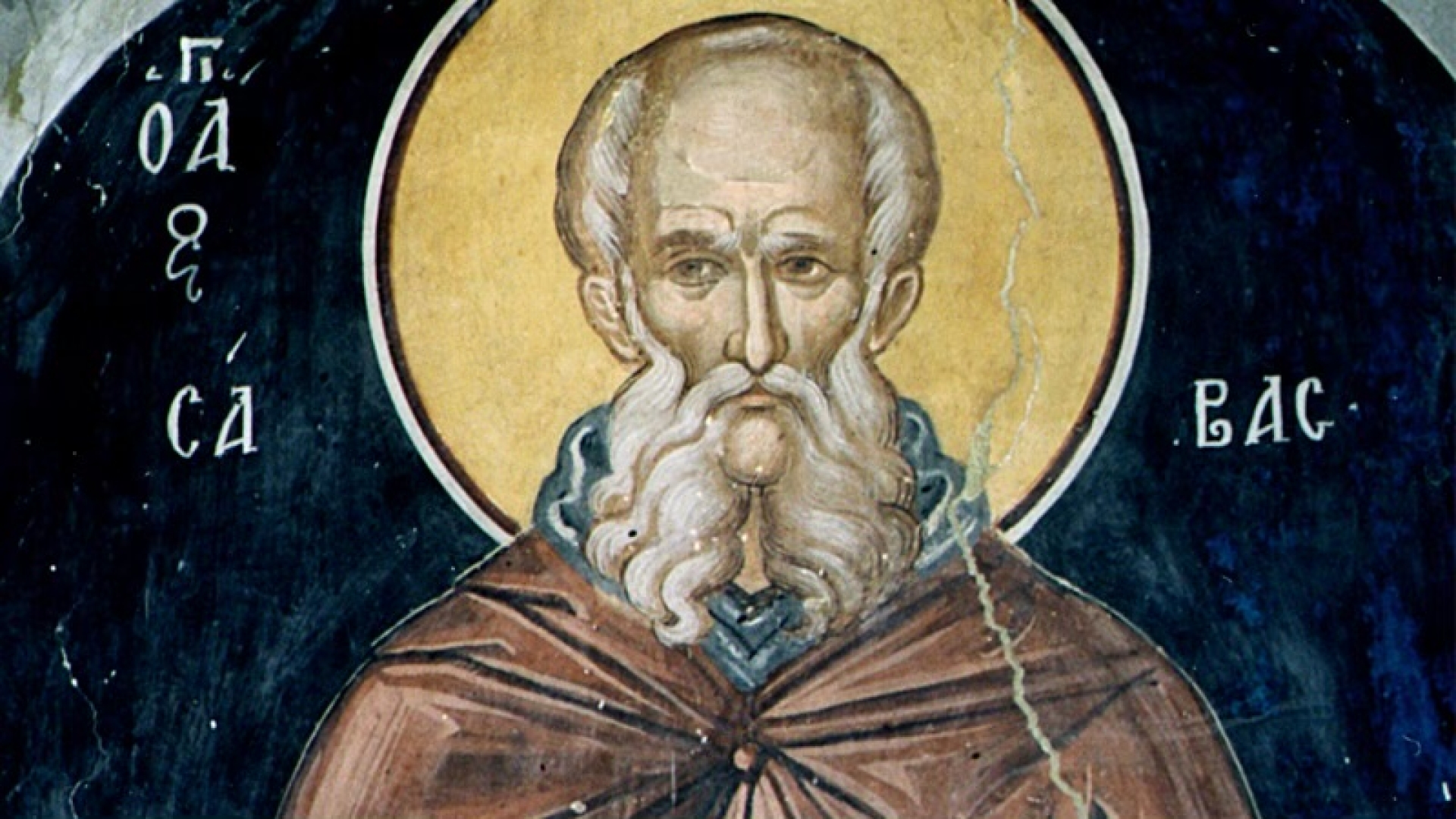
St. Sabbas the Sanctified
December 5 is the universal feast day for St. Sabbas the Sanctified (“Savva” among Slavic Christians). He is the founder of one of the oldest monasteries in the world: Mar Saba in Palestine’s West Bank.
From Pious Child to Holy Monk
Born in 439 near Caesarea in Cappadocia to devout Christian parents, John and Sophia, the young Sabbas received his first taste of monastic life at the age of eight. While his parents were away, he entered the monastery of St. Flavian where he quickly learned to read and became conversant with the Holy Scriptures. Though urged by his parents to leave monasticism and marry, he received monastic tonsure at 17.
After nearly a decade at St. Flavian, Sabbas traveled to Jerusalem to stay at the monastery St. Euthymius the Great. Already known for his strict life of fasting and prayer, Sabbas was then sent to the holy elder Abba St. Theoctistus, whose monastery followed a strict cenobitic (community) rule. Upon Theoctistus’s passing around Sabbas’s 30th year, the future saint retreated to a cave where he lived a solitary monastic life for five years, only occasionally joining his monastic brethren in liturgical prayer.
It is around this period that Sabbas came under the further direction of St. Euthymius and accompanied him on his pilgrimages to the wilderness. Following Euthymius’s death in 473, Sabbas sought out another monastery, this time of St. Gerasimos of Jordan.
Founding of Mar Saba
After locating another cave to inhabit, Sabbas eventually attracted other monks to take up residence nearing his dwelling on the cliffs of the Kedron Gorge, southeast of Jerusalem, which is today part of the Bethlehem Governorate of Palestine. This initial grouping of monastics became the foundation for the Holy Lavra of St. Sabbas, better known in Arabic and Syriac as Mar Saba.
Initially comprised of cave dwellings for the approximately 70 monks who settled there, these cells rapidly expanded into multi-room units with chapels. Two churches were later constructed for the monks, along with a series of chapels. The first of the two churches, originally consecrated to Sabbas’s former spiritual father Theoctistus in 491, was later rededicated to St. Nicholas. The second church, dedicated to the God-bearing (Theotokos) Virgin Mary, was consecrated in 502. The chapels at the monastery are dedicated to Ss. Joachim and Anna, parents of the Blessed Virgin Mary; St. John Chrysostom; St. John of Damascus (who resided at and died at the monastery); St. George; and the Archangels.
In 491, Sabbas was ordained a priest and later made archimandrite (“chief of the sheepfold”) over all the monasteries in Palestine. During the latter period of his life, Sabbas founded other monastic communities and composed a monastic rule known as the Jerusalem Typikon to regulate the life and liturgical practices of the monks under his care. With many miracles attributed to him, Sabbas was also revered as a champion for orthodoxy against the Monophysites. He reposed in 532 and was buried at Mar Saba.
Later Years and Importance
In the millennium that followed its foundation, Mar Saba experienced turmoil at the hands of the Muslims. During the Crusades, Mar Saba received protection under the Latin (Catholic) Kingdom of Jerusalem, though the monastery was eventually abandoned by the end of the 15th century due to Bedouin raids. Revived by the Serbian Orthodox Church in 1504, the community received significant financial support from the Russian Empire until coming back under the control of the Greek-Orthodox Patriarch of Jerusalem, where it remains to this day.
During the Crusader period, St. Sabbas’s relics were transferred from Palestine to Rome, where they stayed until Pope Paul VI returned them to the monastery in 1965. While Mar Saba is no longer within the jurisdiction of the Catholic Church, the monastery is undeniably part of the Universal Church’s patrimony. The aforementioned Jerusalem Typikon remains the backbone of Eastern Christian monasticism and worship for those following the Byzantine Rite, including Greek Catholics in Eastern Europe and the Middle East.
There is a tradition that holds that the final Divine Liturgy (Mass) before the Last Judgment will be prayed at Mar Saba. When that moment arrives, may this venerable and historic monastic community be once again in communion with the Catholic Church.
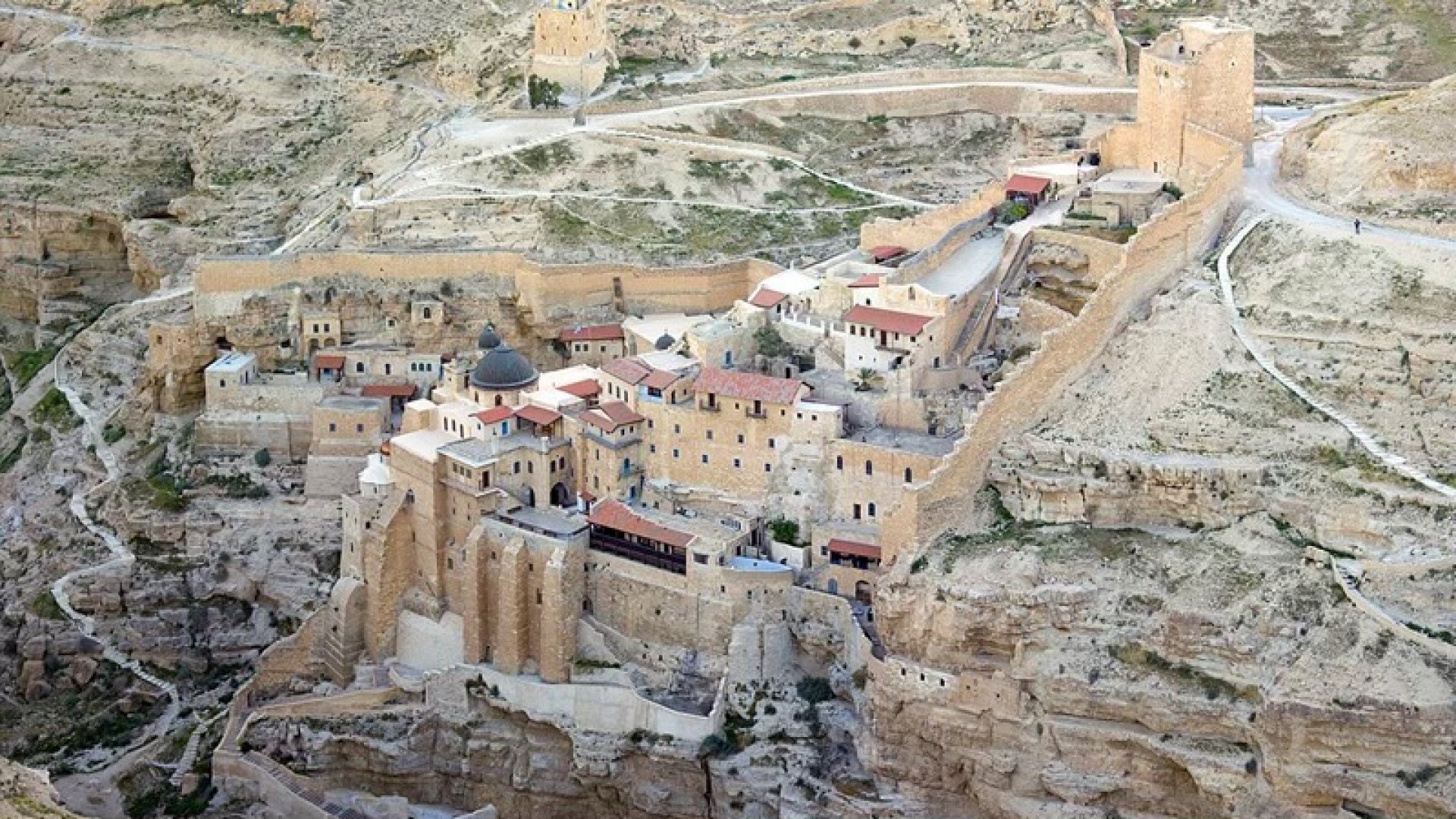
Mar Saba in Palestine
